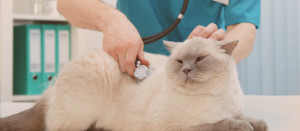Daily Exercise for Your Dog May Help Prevent Serious Diseases

When it comes to keeping your dog healthy, people often think of choosing the right food, regular visits to the vet, and making sure your dog gets enough play time. But play time or brief walks don’t always provide your dog with enough crucial aerobic exercise—and dogs that don’t get enough exercise are more likely to become overweight or obese.
Overweight pets are becoming more and more common. We’re all busy these days, and most of us barely have enough time to exercise ourselves, much less ensure that our animals get adequate activity. But it’s crucial for your pet’s health (just as it is for our own!) to make sure they’re up and moving briskly every day. Your dog probably wants to exercise every day, hard enough to make them pant. And making sure your dog keeps active can help prevent a host of serious conditions and diseases.
When dogs become overweight, they suffer from the same sorts of problems as overweight humans do. Overall, they have a shorter life expectancy, and overweight dogs are at risk for diabetes, bone diseases and joint pain, diseases of the heart and the lungs, and cancer. While, as is the case with humans, daily exercise is no guarantee against chronic illness, the evidence suggests that it helps. Staying at a healthy weight can also help your dog once he or she gets older. Aging dogs can have a difficult time getting up, jumping into cars, and playing. Obesity puts extra strain on their joints, which compounds these struggles.
Of course, not all dogs are the same. The exercise your dog needs will vary based on its breed, age, size, and general health. A border collie will need a lot more active time to remain healthy than a teacup terrier, for example. But, an average dog will need between half an hour to two hours of activity every day.
Walking is a great way to get your dog up and moving, but that’s not the only way you can exercise them. In fact, your dog can be a great motivator for keeping you and your family active! A nice family hike can be a great way to get you and your dog’s heart rates up, as can a few runs a week. Even playing a game of fetch is great for you and your pet. You’re up off the couch or away from your desk, moving; they’re running happily to and fro, getting in the heart-healthy exercise they need.
Of course, it’s good to be cautious. Like older humans, older dogs may not be up to every challenge. Before embarking on a weight loss program for your pet, consider a visit to your primary veterinarian. Just like you’d consult a doctor before trying to lose weight, it’s a good idea to talk to a professional about your dog’s unique needs. Your pet can’t tell you when he or she is tired, thirsty, or hurting, so it’s good to know everything before changing up a routine.
VRC is a specialty veterinary healthcare center in Malvern. We are open 24 hours a day, 7 days a week, 365 days a year.






 Email
Email

 Pet ownership means a lot of things. Joy, companionship, a lot of laughs… but it can also mean dealing with an injury when your pet gets hurt. As we all know, injuries can happen anywhere, any time. While there’s nothing especially dangerous about playing in the park, going for a run, or having a healthy after-dinner game of fetch in the front yard, even in these instances injuries can and will occur.
Pet ownership means a lot of things. Joy, companionship, a lot of laughs… but it can also mean dealing with an injury when your pet gets hurt. As we all know, injuries can happen anywhere, any time. While there’s nothing especially dangerous about playing in the park, going for a run, or having a healthy after-dinner game of fetch in the front yard, even in these instances injuries can and will occur. Lyme disease is a notorious tick-borne disease that all pet owners worry about—especially in Pennsylvania, where Lyme disease is fairly common. If your dog is an indoor-outdoor dog, or if you like to take your dog on long walks or hikes in wooded areas, it’s a good idea to learn all you can about protecting your dog from Lyme disease—and there’s no better time than April, which is
Lyme disease is a notorious tick-borne disease that all pet owners worry about—especially in Pennsylvania, where Lyme disease is fairly common. If your dog is an indoor-outdoor dog, or if you like to take your dog on long walks or hikes in wooded areas, it’s a good idea to learn all you can about protecting your dog from Lyme disease—and there’s no better time than April, which is 

